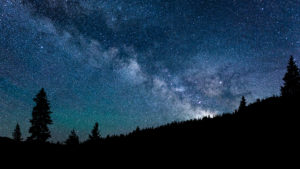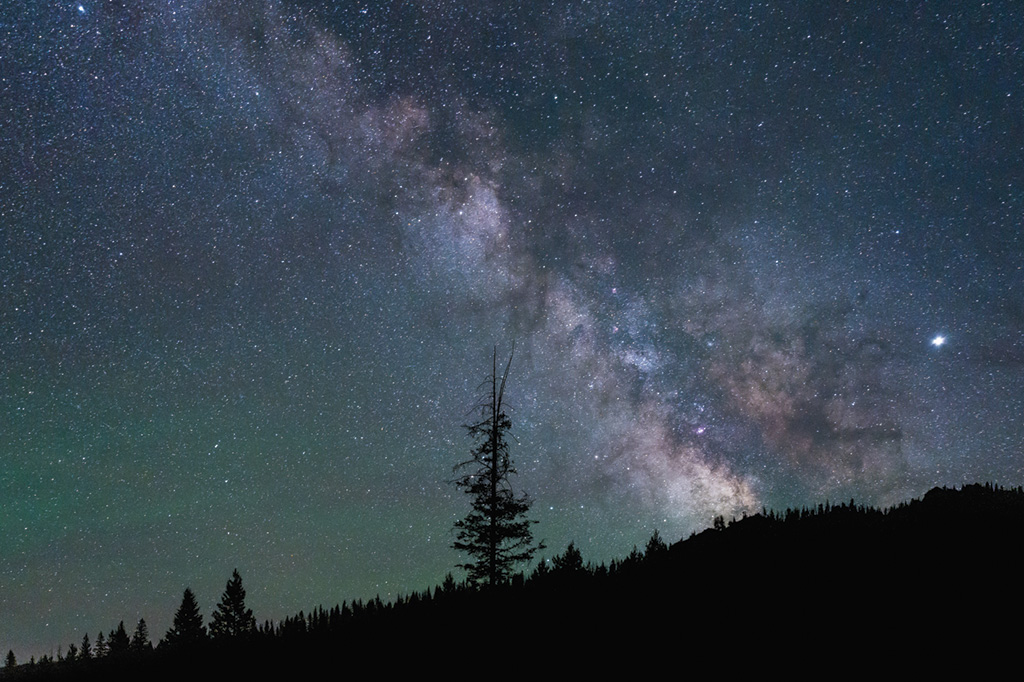Although we now know the northern lights are a result of solar winds interacting with particles in the upper atmosphere, that doesn’t diminish the awe we feel when we spot them and other spectacles. This winter, the Sun Valley area will be ideal for viewing everything the cosmos has to offer: with frigid temps ensuring moisture-free air combined with Sun Valley’s location in Central Idaho’s Dark Sky Reserve offering extremely dark skies, stargazers of all experience levels will be able to find something to enjoy.or thousands of years, humans have gazed at the night sky, marveling at celestial displays like the moon, stars, meteors and the aurora borealis, or northern lights. Many ascribed mythic significance to these sights, such as the Vikings, who believed the northern lights were reflections off the shields of valkyries as they ushered spirits of slain warriors to their final rest in Valhalla.
What You Need
Aside from proper cold-weather clothing, most stargazers need only their eyes—and they can still see quite a lot.
For stargazers who want to see more objects and more detail, a pair of binoculars will do the trick: they can increase the number of visible stars from 3,000 with the naked eye to around 100,000. For specific details of planets and a view of very distant objects, a telescope will be necessary.
To acquaint yourself with the night sky, get your hands on a planisphere: a handheld star chart that shows all the visible stars, constellations and objects for a specific time and date. More tech-savvy stargazers can use their smartphones to download the free Star Chart app, which overlays a map of visible objects on your current surroundings.
Where and When to Watch
Any backyard in the area will be suitable for viewing, given clear skies.
For better viewing, though, you should get away from light sources and go
where the horizon is less obstructed, such as a hilltop or field. Dollar Mountain would be a good spot, and Craters of the Moon National Monument offers unparalleled views for the adventurous.
The prime time for stargazing falls between 11 p.m. and 2 a.m. during periods of the new moon.

For the best view, head away from city lights.
What to Look For
All the major constellations can be seen with the naked eye. If you look straight up around 1 a.m., you will see the constellation Orion, the Hunter, best known for
his “belt,” made up of three bright stars
in a row.
The stars of Orion’s Belt can point the way toward other objects: if you follow the line the stars make to the west, you’ll come to the constellation Taurus, the bull. Heading east from the star Betelgeuse, which marks Orion’s western shoulder, will lead you to Gemini, the Twins.
Other major winter constellations include the dogs Canis Major and Canis Minor, which contain Sirius and Procyon, two of the brightest stars in the night sky.
See More Than Just Stars
Planets — Several planets also can be viewed in the winter months. Those that can be seen with the naked eye are: Mercury, at its brightest on Dec. 13; Venus, at its brightest from Jan. 1-3; and Mars, at its brightest from Jan. 1-6. You also can see Jupiter and Saturn this winter, though neither will be particularly bright. (If you want to see Saturn’s rings or Jupiter’s Big Red Spot, though, you will need a telescope.) Uranus and Neptune can be seen all winter with good binoculars or a small telescope, and they will be their brightest on Dec. 31.
Meteor Showers — The biggest meteor shower this winter includes the Geminids from Dec. 4-17, which will peak around Dec.13-14 and should be visible from about 10 p.m. onward.
Aurora Borealis — As for the aurora borealis, a location with an unobstructed view of the horizon is preferable. To stay up-to-date with forecasts, visit the National Oceanic and Atmospheric Administration’s website, swpc.noaa.gov/products/aurora-30-minute-forecast.
The northern lights tend to peak between 11 p.m. and 2 a.m.


